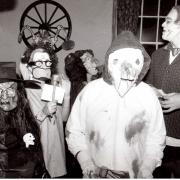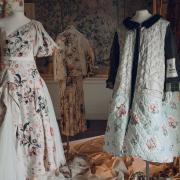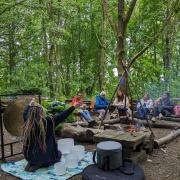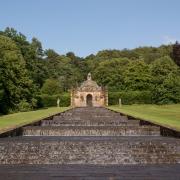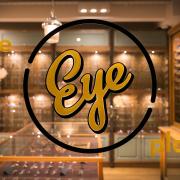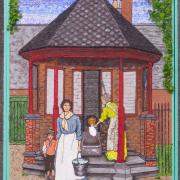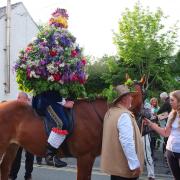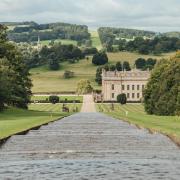Long Eaton’s public library is over 100 years old. Its brainchild, philanthropist Andrew Carnegie, believed ‘a library outranks any other one thing a community can do to benefit its people’
The construction, in 1906, of Long Eaton’s public library was financed, as were more than 600 other libraries in Britain, by the philanthropist Andrew Carnegie, who believed that ‘a library outranks any other one thing a community can do to benefit its people’.
The responsibility for vetting applications made to the Carnegie Foundation to support the building of community libraries was delegated to Carnegie’s personal secretary, James Bertram. Although Mr Bertram used detailed questionnaires to check the commitment of each applicant (normally a local council) and their plans for ongoing funding and management, he gave them a reasonably free hand in choosing the architectural style of the library.
Elevation by learning
However, he was known to favour buildings where users are welcomed into the library through a prominent doorway which they have approached by walking up an external staircase running from ground level. It was said that this preference was based on his rather fanciful notion of the entrance staircase being a symbol of ‘elevation by learning’!
Designed by the local architectural practice of Gorman and Ross, Long Eaton’s Carnegie Library more than satisfies this favoured arrangement, because it has two external staircases leading from ground level to the main doorway.
Tall and glazed, the doorway is topped by a stone lintel inscribed with the words ‘Free Library’. The lintel supports a semi-circular pediment, embellished with an illustration, picked out in mosaic, of a ‘figure of learning’ set against a golden sunburst. The goddess-like figure, who is dressed in a flowing red robe, holds a torch in her left hand and a book in her right hand. The book is open at a page containing the quotation: ‘And God said, let there be light, and there was light’.
The theme of ‘light’ continues at the head of a tall panel to the right of the pediment, where the word ‘LUX’ is picked out in blue lettering on a gold mosaic background. The word displayed in the matching mosaiced panel on the left-hand side of the pediment is ‘PAX’, thereby completing the motto ‘Peace and Light’.

Eye-catching
With its semi-circular pediment, tall side-panels, mosaiced illustration and words of wisdom, the central bay of Long Eaton’s Library must rank as one of the most original and eye-catching examples of Art Nouveau architecture to be found anywhere.
By way of contrast, the red-brick bays that flank the central bay are much less exuberant in appearance. Decoration is confined to a narrow frieze of blue tiles below the overhanging eaves of a hipped roof of Westmorland slate. Each wing is lit by a wide bay window.

Reading maketh a full man
Inside the building, there is a fabulous stained-glass window, designed by Andrew Stoddart, which depicts the muses of Literature, Poetry, Painting and Music. The window also bears the words: ‘Read not to contradict and refute but to weigh and consider’ and ‘Reading maketh a full man’.
Long Eaton’s library offers lots of opportunities for readers to follow this advice. In addition to its wide selection of non-fiction and fiction books, it has a welcoming children’s area, a particularly well-stocked section devoted to local and family history, and, as in all public libraries today, it has computers available for use.
Regardless of this excellent provision, the best asset of the library is the staff, who are knowledgeable, pleasant and more than happy to answer queries.
One query that is often put to them concerns the whereabouts of a copper plaque that is clearly visible on archive photographs of the front of the library. After explaining that the plaque is now kept in a storeroom pending its possible restoration, a member of staff will be pleased to bring it out for inspection.
The inscription on the plaque reads: ‘This public library was given to Long Eaton by Andrew Carnegie Esq. The site and the books were given by a number of townsmen.’

Helping those who help themselves
As this dedication shows, the people of Long Eaton were able to obtain funding from Andrew Carnegie because they understood his approach to philanthropy: ‘In bestowing charity, the main consideration should be to help those who will help themselves.’
Born in Dunfermline in 1835, Andrew emigrated with his family to Pennsylvania at the age of 12. Progressing rapidly from his first job as a ‘bobbin boy’ in a cotton factory, he became a telegraph operator with the Pennsylvania Railroad Company.
After investing in several railroad industries, especially those involved in the manufacture of rails, sleeping cars and bridges, he set up his own steel company, which became so successful that he was able to sell it to J.P. Morgan for $480 million in 1901.
From this point, driven by his belief that ‘the man who dies this rich, dies disgraced’, Carnegie set about using his fortune to fund the building of thousands of libraries, educational institutions and cultural venues worldwide.
WHILST YOU ARE HERE
After visiting the Carnegie Library, you will be delighted to find that Long Eaton possesses two other striking Art Nouveau buildings designed by Gorman and Ross. Other noteworthy buildings in the town include the Town Hall, designed by the celebrated Derby architect Joseph Pickford, and one of the largest lace-making factories ever built.

Art Nouveau in the Market Place
Matching the Carnegie Library with the originality of their Art Nouveau architecture, two other buildings designed by Gorman and Ross cannot fail to catch your eye when you visit the Market Place. Although the buildings, numbered 38 and 40, differ in elevation and detail, they are equally eccentric in appearance.

Long Eaton Town Hall
Built in 1778 as a grand farmhouse for a local gentleman farmer called Henry Howitt, this superb red-brick building, designed by Joseph Pickford, was acquired by Long Eaton District Council in 1921. Despite several alterations and extensions, the building retains its original 18th century façade, which is a perfect example of Georgian elegance and restraint.

Harrington Mills
Built in 1885 by a consortium of lace-makers, this enormous factory has a length of 17 metres and comprises one and a quarter million bricks. The former mill complex, which is now occupied by lots of different companies, features a succession of tall projecting staircase turrets which look uncannily like the defensive towers of a medieval walled town.






